Tearjerkers and Truths: The Best Completed Drama Manga You Need to Read
The joy, grief, love, and regret that define our humanity are all reflected in drama, which is the language of emotion. It uses stories that evoke strong emotions and silent thought to convey the fleeting beauty of life. Characters in drama make mistakes, get better, and mature, reflecting our own innermost goals and challenges. Their experiences serve as a reminder that even the tiniest things can have a profound impact and that suffering is not the antithesis of hope but rather its companion. Because of the reality it conveys, rather than the narrative, a well-written play endures long after the last scene. It demonstrates to us the significance of every pain, quiet, and farewell, as well as the power that comes from feeling truly.
Oyasumi Punpun
Published: March 15, 2007 - November 2, 2013
Chapters: 147
Genres: Drama, Slice of Life
Serialization: Big Comic Spirits
Authors: Inio Asano (Story & Art)
Reason: A moving psychological drama in contemporary manga, Oyasumi Punpun follows Punpun, a bird-like creature, through puberty and the early stages of maturity. The narrative by Asano Inio is noteworthy for its in-depth examination of existential dread, mental health, and the consequences of fractured families. The work explores issues of trauma, identity, and human connection using a variety of artistic mediums and fragmented narrative, allowing readers to face difficult emotional realities. In the end, drama fans will find Oyasumi Punpun to be a life-changing and unforgettable event.
Published: August 7, 2013 - November 19, 2014
Chapters: 64
Genres: Award Winning, Drama
Serialization: Shounen Magazine (Weekly)
Authors: Yoshitoki Ooima (Story & Art)
Reason: The tragic and incredibly sympathetic manga Koe no Katachi (A Silent Voice) addresses the effects of bullying, loneliness, and the protracted path to redemption. The protagonist of Yoshitoki Ooima's manga is Shoya Ishida, a young man who, years after torturing his deaf classmate Shoko Nishimiya, now begs for forgiveness. Its unwavering honesty—characters are not idealized, and their emotional scars are exposed—is what distinguishes this novel from others in the drama genre. Instead, then providing simple answers, the story examines how human behavior is influenced by feelings of guilt, shame, and a need for connection. Through poignant illustrations and complex character growth, Koe no Katachi challenges readers to consider empathy, responsibility, and the brittle beauty of second chances.
Jumyou wo Kaitotte Moratta. Ichinen ni Tsuki, Ichimanen de.
Published: August 10, 2016 - October 25, 2017
Chapters: 18
Genres: Drama
Serialization: Shounen Jump+
Authors: Shouichi Taguchi (Art), Sugaru Miaki (Story)
Reason: In the contemplative drama Jumyou wo Kaitotte Moratta. Ichinen ni Tsuki, Ichimanen de. (I Sold My Life for Ten Thousand Yen Per Year), Kusunoki, a young man with just three months to live, sells thirty years of his life for a small fee. This story explores the value of life. Instead of overt catastrophe, the story focuses on themes of human connection and regret, highlighting Kusunoki's emotional growth and his relationship with his watcher, Miyagi. For readers who value complex, human-centered drama, this manga offers a moving reflection on the fleeting nature of life, along with moments of optimism and the possibility of redemption.
Published: April 27, 2015 - September 27, 2019
Chapters: 50
Genres: Drama, Girls Love
Serialization: Dengeki Daioh
Authors: Nio Nakatani (Story & Art)
Reason: The introspective portrayal of identity and emotional vulnerability in Yagate Kimi ni Naru (Bloom into You) is noteworthy. The narrative delves into complicated emotions without resorting to dramatic clichés as it examines Yuu Koito and Touko Nanami's gradual journey of self-discovery. The tension in the story, particularly Touko's grieving process, deepens the emotional impact. For those looking for character-driven drama, it offers a satisfying experience by emphasizing a slow emotional development, leaving room for quiet and subtle changes that represent true human connection.
Published: October 12, 2013 - March 16, 2018
Chapters: 238
Genres: Comedy, Drama, Romance, Slice of Life
Serialization: comico
Authors: Sou Yayoi (Story & Art)
Reason: ReLIFE blends adolescent rediscovery with mature disenchantment to provide a refreshingly insightful take on the drama genre. It centers on 27-year-old burnout Arata Kaizaki, who is offered the opportunity to repeat high school as part of an enigmatic experiment. The way this novel explores themes of regret, healing, and second chances using that premise is what makes it so captivating, not simply the sci-fi edge. Arata's interactions with classmates who are dealing with their own emotional baggage—from social anxiety to academic pressure—create a tapestry of human challenges as the drama progresses. ReLIFE reminds readers that it's never too late to face the past and reshape the future by establishing its emotional impact through character development and subdued discoveries rather than relying on sensationalism.
Published: April 6, 2011 - February 6, 2015
Chapters: 44
Genres: Award Winning, Drama, Romance
Serialization: Shounen Magazine (Monthly)
Authors: Naoshi Arakawa (Story & Art)
Reason: Kousei's journey via music and memory is the main topic in Shigatsu wa Kimi no Uso, a manga based on emotional issues like trauma and bereavement. Every musical performance highlights the characters' emotional complexity as they deal with loss and acts as a cathartic and expressive outlet. The manga skillfully illustrates how art can be both taxing and uplifting, raising issues of how to proceed in the face of traumatic experiences. Instead of offering a straightforward closure, the ending is well-earned, reflecting the characters' emotional journey and offering a pleasant release.
Published: December 26, 1994 - June 4, 2013
Chapters: 97
Genres: Action, Drama, Mystery, Sci-Fi, Suspense
Serialization: Young Ace
Authors: Yoshiyuki Sadamoto (Story & Art)
Reason: The main focus of Evangelion is on emotionally damaged characters surviving in a ruined society. The story's reality is enhanced by Shinji's immobility, Asuka's craving for approval, and Rei's ambiguity; the real drama is revealed in subdued scenes rather than mecha fights. The manga does a good job of showing how relationships are shaped by internal scars, leading to intense encounters. It invites continued interpretation because of its rich undercurrent, which blends psychological depth with religious elements. The story is improved by the protagonists' seclusion, which highlights their difficulties relating to one another. Readers are challenged by the ambiguous finale, which makes them reflect and leaves them feeling both uneasy and fulfilled.
Published: July 18, 1998 - November 20, 2006
Chapters: 136
Genres: Award Winning, Drama, Romance, Supernatural
Serialization: Hana to Yume
Authors: Natsuki Takaya (Story & Art)
Reason: A story about emotional scars like abuse, abandonment, and bereavement, Fruits Basket depicts the difficult path to recovery. Radical kindness is embodied by Tohru Honda, who helps the Sohma family, each of whom has their own responsibilities, improve. With the zodiac curse acting as a metaphor for generational trauma and emotional isolation, the drama emerges from internal conflicts and vulnerabilities rather than external demands. Little deeds of bravery result in deep bonds as characters face their relationships. In admitting sorrow without erasing it, the series ends with a sense of earned closure, highlighting the fact that living with one's wounds is a necessary part of true healing.
Published: August 25, 2016 - May 25, 2017
Chapters: 10
Genres: Drama, Romance
Serialization: Monthly Action
Authors: Idumi Kirihara (Art), Yoru Sumino (Story)
Reason: The narrative examines how death awareness might enhance life while following Sakura Yamauchi, who is terminally ill with a pancreatic illness. Via quiet encounters and maturation demonstrated via shared vulnerabilities rather than big gestures, Sakura and the unnamed protagonist develop a deeper emotional bond. The story is made more tense by the protagonist's transition from emotional distance to closer ties. The manga is a moving experience with each scene and line having an impact in just ten chapters. The conclusion clearly reframes earlier episodes and offers a sorrowful yet hopeful finish, leaving a profound emotional impression.
Kimi no Na wa.
Published: May 27, 2016 - January 27, 2017
Chapters: 9
Genres: Drama
Serialization: Comic Alive
Authors: Makoto Shinkai (Story), Ranmaru Kotone (Art)
Reason: The emotional stakes of Mitsuha and Taki's relationship are the main focus of Kimi no Na wa, despite its body-swapping premise. The story demonstrates the agonizing conflict between remembering and letting go, as well as how memory form's identity. The manga uses visual storytelling to portray a sense of longing that is characterized by ephemeral moments and unmet expectations. The reader is left feeling deeply reflective and empathetic by the ending, which prioritizes emotional payoff over spectacle due to the wordless, moving imagery that heightens the emotional weight.
Bakuman.
Published: August 11, 2008 - April 23, 2012
Chapters: 176
Genres: Comedy, Drama, Romance
Serialization: Shounen Jump (Weekly)
Authors: Takeshi Obata (Art), Tsugumi Ohba (Story)
Reason: Bakuman's focus on ambition, rather than sorrow or romance, sets it apart from other drama comics. Mashiro and Takagi, the protagonists, deal with industry demands and deadlines; their journey illustrates the emotional cost of pursuing goals. Rich rivalry between characters, each representing a distinct creative mindset, are included in the story, which candidly displays the highs and lows of serialization. Mashiro and Azuki's relationship are a prime example of support and dedication, and the characters' growth as a result of their errors and failures gives the narrative depth and emotional impact.
Published: July 14, 2007 - July 8, 2013
Chapters: 288
Genres: Award Winning, Comedy, Drama
Serialization: Shounen Jump (Weekly)
Authors: Kenta Shinohara (Story & Art)
Reason: Throughout the series, Bossun, Himeko, and Switch—all members of the SKET Brigade—deal with their emotional baggage, demonstrating how loneliness and trauma impact their identities and fortitude. With narratives that are honestly addressed and seamlessly blend comedy and drama, the group assists students in addressing a variety of concerns, including bullying and mental health. Instead of using melodrama, SKET Dance emphasizes character development to create emotional tension while highlighting moments of comprehension and connection. This tonal balance, which is characteristic of Kenta Shinohara's storytelling technique, heightens the narrative's effect.
Lovely★Complex
Published: August 13, 2001 - August 13, 2007
Chapters: 68
Genres: Award Winning, Comedy, Drama, Romance
Serialization: Bessatsu Margaret
Authors: Aya Nakahara (Story & Art)
Reason: The narrative of Risa and Otani in Lovely★Complex goes beyond romantic themes by tackling issues of self-doubt and social expectations. As the protagonists' progress from cliched misconceptions to real defects and miscommunications, their journey is marked by believable emotional highs and lows. Otani's little size and Risa's height represent larger issues with self-worth. While supporting characters add complexity and show different kinds of love and self-discovery, the story also promotes embracing individuality.
Published: April 4, 2012 - August 3, 2013
Chapters: 16
Genres: Drama, Fantasy, Romance, Slice of Life
Serialization: Young Ace
Authors: Mamoru Hosoda (Story), Yuu (Art)
Reason: Hana's transformation from a carefree college student to a devoted single mother is shown with unvarnished honesty, highlighting her existential, emotional, and economic hardships without romanticizing them. She is portrayed as a strong mother figure in manga in this way. With their divergent trajectories signifying self-discovery versus social expectations, her children Yuki and Ame's dualism represent the universal quest for identity. With an emphasis on themes of loss, loneliness, and the bittersweet nature of letting go, the story's emotional depth is conveyed through nuanced decisions rather than overt displays. The drama is made more dramatic and powerful by Yuu's art, which uses gentle, emotive graphics that emphasize time and changing emotions while evoking atmosphere over spectacle.
Published: May 12, 2007 - December 24, 2013
Chapters: 80
Genres: Comedy, Drama, Romance
Serialization: Betsucomi
Authors: Kyousuke Motomi (Story & Art)
Reason: Teru's digital guardian angel, Daisy, has an impact on her journey, which begins with the death of her brother. The plot is fueled by the manga's exploration of grief as multifaceted and transformational. As a result of their shared suffering, Teru and Kurosaki's relationship is characterized by sensitivity and guilt. Psychological drama and romance themes coexist, with human growth being bolstered by corporate conspiracy and hacking. Characters face tragedy and pursue atonement as secrets come to light. Traditional shoujo clichés are challenged by Teru's journey from mourning to self-assurance and her search for self-worth, which occurs independently of Daisy's influence.
Published: January 22, 2018 - August 11, 2020
Chapters: 123
Genres: Drama
Serialization: Shounen Jump (Weekly)
Authors: Tatsuya Matsuki (Story), Shiro Usazaki (Art)
Reason: Atypical shounen heroine Kei Yonagi creates honest performances that are emotionally taxing by using method acting that stems from her pain. Her battle to preserve her identity in the face of her responsibilities is highlighted as the story examines the paradox of art as both restorative and destructive. Instead of glamor, the entertainment industry is shown as a high stake setting full of intricate conflicts. Usazaki emphasizes drama through tension and quiet rather than speech, and his artwork skillfully conveys emotions through nuanced facial expressions and body language.
[Oshi no Ko]
Published: April 23, 2020 - November 14, 2024
Chapters: 168
Genres: Drama
Serialization: Young Jump
Authors: Aka Akasaka (Story), Mengo Yokoyari (Art)
Reason: Oshi no Ko's multi-layered characters, especially Ai Hoshino and her kids, examine the psychological effects of celebrity culture. The narrative explores themes of truth, rebirth, and retribution while offering a genuine glimpse into media manipulation. Characters' motivations are entwined with longing, ambition, and sadness, creating a systemic drama that makes their decisions both heartbreaking and captivating.
Kindaichi Shounen no Jikenbo: File Series
Published: October 14, 1992 - October 22, 1997
Chapters: 219
Genres: Award Winning, Drama, Mystery, Supernatural
Serialization: Shounen Magazine (Weekly)
Authors: Shin Kibayashi (Story), Youzaburou Kanari (Story), Fumiya Satou (Art)
Reason: Because of its intense emotional core, the series—which is renowned for its complex whodunits—elevates into drama. Every situation is tragic and frequently stems from trauma or grief. The detective with the same name, Kindaichi, observes human misery and exhibits moral turmoil and empathy. The characters' struggles with their emotional scars, which underscore the intricacy of justice, provide the drama.
Deep Love: Ayu no Monogatari
Published: May 13, 2004 - September 13, 2004
Chapters: 8
Genres: Drama
Serialization: Bessatsu Friend
Authors: Yoshi (Story), Yuu Yoshii (Art)
Reason: The emotional journey of a young girl named Ayu, who experiences abuse, exploitation, and the pursuit of meaning in a world that is out to shatter her, is explored in this violent manga. With a complicated protagonist who exhibits both resistance and desperation, the story is intensely personal. The manga is a potent and relevant read because of its realistic and simple visuals, which let the story's emotional impact shine through.
Deep Love: Pao no Monogatari
Published: 2005
Chapters: 11
Genres: Drama, Slice of Life
Serialization: Bessatsu Friend
Authors: Yoshi (Story), Akiyo Kurosawa (Art)
Reason: Pao no Monogatari is a spin-off manga that centers on the psychological effects of a stray dog named Pao on people. Because Pao's experiences are used to tell the story, the emotional impact feels genuine and universal. With 11 intentional and deeply meaningful chapters, the manga is a meditation on empathy and resiliency. While the visual narrative mostly relies on the ambiance of urban degradation, warmth, and loneliness, Akiyo Kurosawa's artwork subtly conveys Pao's feelings.
Suzuka
Published: February 18, 2004 - September 19, 2007
Chapters: 171
Genres: Comedy, Drama, Romance, Sports, Ecchi
Serialization: Shounen Magazine (Weekly)
Authors: Kouji Seo (Story & Art)
Reason: Heartbreak, jealousy, and personal development are the main themes of Suzuka, a drama about maturing emotionally, romantically, and psychologically. Miscommunication, emotional baggage, and vulnerability abound in Yamato and Suzuka's romance, which keeps readers interested in their personal development. As characters pursue both physical and personal objectives, track and field functions as a metaphor for tenacity, self-control, and emotional fortitude. Clean character designs and expressive emotional beats are balanced in Kouji Seo's artwork, which heightens the drama, particularly in moments of quiet reflection or furious conflict.
Takopii no Genzai
Published: December 10, 2021 - March 25, 2022
Chapters: 16
Genres: Drama, Sci-Fi
Serialization: Shounen Jump+
Authors: Taizan 5 (Story & Art)
Reason: Takopii no Genzai is a potent drama that examines human nature, trauma, and innocence. It centers on Takopii, a good-hearted but ignorant alien who assists Shizuka, a troubled teenager. The story is thought-provoking because it contrasts Shizuka's life's harsh facts with Takopii's innocent optimism. For those looking for a comprehensive, powerful drama without a lengthy commitment, Taizan 5 is the perfect option because of its artistic flair, which lets the emotional impact of each scene come through.
Persona 4
Published: September 19, 2008 - March 27, 2019
Chapters: 68
Genres: Action, Drama, Supernatural
Serialization: Dengeki Maoh
Authors: Shuji Sogabe (Story & Art), Atlus (Story)
Reason: A supernatural whodunit, Persona 4 delves into the intricacies of adolescence and self-acceptance as well as the psychological complexity of interpersonal interactions. The plot centers on Yu Narukami and his friends as they look into a string of killings in Inaba. The voyage is personal and emotionally poignant as the characters confront their "Shadow," exposing their desires, anxieties, and insecurities. By contrasting the scary TV World with the coziness of daily life in Inaba, the artwork effectively conveys the emotional highs and lows.
Senpai wa Otokonoko
Published: December 7, 2019 - December 30, 2021
Chapters: 100
Genres: Drama, Romance
Serialization: LINE Manga
Authors: Pomu (Story & Art)
Reason: Three high school students, Makoto, Aoi, and Ryuuji, are the main subjects of this manga, which explores identity, acceptance, and adolescence. The manga examines issues like internalized shame, gender identity, and social expectations. Readers may relate to the drama on a deep level since it is personal, realistic, and frequently bittersweet. The story's authenticity is complemented by the artwork's clear and expressive style.
Tantei Gakuen Q
Published: May 23, 2001 - July 20, 2005
Chapters: 172
Genres: Comedy, Drama, Mystery
Serialization: Shounen Magazine (Weekly)
Authors: Shin Kibayashi (Story), Fumiya Satou (Art)
Reason: The series emphasizes moral quandaries, personal tragedy, and the importance of justice while concentrating on the emotional journeys of its teenage detectives. The series gains layers of tension and identity dilemma from Ryu, a figure associated with Pluto. The series' emotional core is the Q Class, a surrogate family whose ties become stronger as they take on more challenging cases. The artwork of Fumiya Satō successfully conveys tension, terror, and emotional release by striking a balance between atmosphere and clarity. Character choices and emotional turning points are given weight by the skillfully managed visual pacing during major reveals.
Tenki no Ko
Published: July 25, 2019 - August 25, 2020
Chapters: 15
Genres: Drama, Fantasy, Romance, Slice of Life
Serialization: Afternoon
Authors: Makoto Shinkai (Story), Wataru Kubota (Art)
Reason: The touching tale of Hodaka and Hina, two teenagers who meet in Tokyo amid a period of environmental and personal upheaval. Their romance, their sacrifices, and the results of their decisions are at the center of the story. Whereas Hina struggles with her enigmatic ability to influence the weather, the rain in Tokyo represents loneliness, uncertainty, and longing. Among the topics covered in the manga are fate, agency, and the psychological toll of being "special." With Hodaka's path full of vulnerability and development and Hina's weight of anxiety and duty, the narrative is nuanced yet impactful. Rain-soaked cityscapes, personal character expressions, and ethereal skies all add to the story's emotional impact, and the manga adaptation maintains Shinkai's cinematic splendor.
Deep Love: Reina no Unmei
Published: July 28, 2005 - November 28, 2005
Chapters: 3
Genres: Drama
Serialization: Bessatsu Friend Zoukan BetsuFure
Authors: Yoshi (Story), Yuu Yoshii (Art)
Reason: The story is based on unrelenting adversity, including loss, disease, rape, and desertion. These serve as the emotional framework that molds Reina's journey rather than merely being story devices. It's brutally honest, but it's not subtle. Reina is continuously put to the test in her roles as a mother, daughter, and lover. Her suffering is messy, unjust, and intensely personal; it is not glorified. The drama feels earned because of that rawness. The manga, which has few characters, concentrates more on emotional depth than on extensive subplots. Every moment is more intense because of this proximity, which heightens the drama. Though brief, it is emotionally complex. Although you'll complete it quickly, the ideas it explores will stay with you for a long time.
Inuyashiki
Published: January 28, 2014 - July 25, 2017
Chapters: 85
Genres: Drama, Sci-Fi
Serialization: Evening
Authors: Hiroya Oku (Story & Art)
Reason: Ichiro Inuyashiki's transformation into a machine reveals his search for meaning and restores his humanity. His interactions with Hiro Shishigami, another violent cyborg, are at the center of the story. The narrative tackles topics like media sensationalism and generational neglect while examining loss, loneliness, guilt, and salvation. The manga seems earned rather than coerced since it critiques contemporary culture without preaching.
Kimagure Orange☆Road
Published: March 13, 1984 - September 14, 1987
Chapters: 156
Genres: Drama, Romance, Slice of Life, Supernatural
Serialization: Shounen Jump (Weekly)
Authors: Izumi Matsumoto (Story & Art)
Reason: Kyosuke, Madoka, and Hikaru are at the center of the emotional drama, which centers on remorse, loyalty, and the dread of harming someone. Kyosuke's psychic abilities serve as a metaphor for the chaos of puberty, which is the story's main theme rather than sexual liaisons. The drama is enhanced by Madoka's reserved demeanor and fragility, while the 1980s backdrop furthers themes of emotional turmoil and ephemeral youth. Wistful longing permeates the story, giving depth to even the most ordinary scenes.
Citrus
Published: November 17, 2012 - August 18, 2018
Chapters: 50
Genres: Drama, Girls Love, Erotica
Serialization: Comic Yuri Hime
Authors: Saburouta (Story & Art)
Reason: The relationship between Mei and Yuzu is far from simple. The drama is driven by their emotional push-pull, which is characterized by vulnerability, perplexity, and jealousy. It involves managing pain, trust, and self-discovery; it's not simply about attraction. Their love tension is compounded by familial pressure and social taboo because they are stepsisters. Every interaction becomes tense with consequences as a result of the tremendous weight that is added and boiling beneath the surface. Mei's aloof, icy exterior belies a maelstrom of suppressed emotions and unresolved anguish. One of the most gripping storylines is her slow disintegration, which compels readers to consider how trauma affects conduct. One of the highlights is Yuzu's transition from carefree fashionista to emotionally stable partner. Mei's emotional instability is counterbalanced by her sensitivity and perseverance, which give the drama its heart.
Deep Love: Host
Published: 2005
Chapters: 6
Genres: Drama
Serialization: Bessatsu Friend
Authors: Yoshi (Story), Yuu Yoshii (Art)
Reason: The narrative centers on Atsushi, a charming host who uses charm and seduction to hide his suffering. The drama feels oppressively genuine because of the terrible honesty with which his decline into emotional indifference is depicted. As a host, Atsushi takes advantage of women's loneliness by providing affection in exchange for a fee. Instead of glamorizing this, the manga highlights the psychological costs of commodifying intimacy for both the host and the customers. The history of Atsushi is replete with instances of abuse, abandonment, and neglect. As he attempts to create a future he doesn't think he deserves and faces the demons of his past, the drama gets more intense. This manga, like other Deep Love chapters, isn't afraid to show the most sinister facets of city life, such as drug use, exploitation, and emotional manipulation. Despite its relentlessness, the drama is never superfluous.
Fuuka
Published: February 12, 2014 - April 4, 2018
Chapters: 204
Genres: Drama, Romance, Ecchi
Serialization: Shounen Magazine (Weekly)
Authors: Kouji Seo (Story & Art)
Reason: The main characters are forced to face sadness as the tone of the manga changes from humorous to emotionally charged. Music is a lifeline; it represents connection and healing. Personal development and emotional baggage are layered on top of the love triangle. Yuu Haruna, the main character, transforms from a submissive teenager into a driven artist who exhibits remorse, ambition, and fortitude. Real decisions, not made ones, are what create the drama.
Star Wars: Lost Stars
Published: May 4, 2017 - March 21, 2019
Chapters: 17
Genres: Action, Adventure, Drama, Romance, Sci-Fi
Serialization: LINE Manga
Authors: Yuusaku Komiyama (Art), Claudia Gray (Story)
Reason: In the love drama Lost Stars, Thane Kyrell and Ciena Ree, who were childhood friends, turn against one another as a result of their different trajectories. Ciena's devotion and Thane's mounting opposition clash in their relationship, which is a battleground of principles, heartache, and difficult decisions. The movie humanizes the cosmic struggle and gives it more emotional weight by revisiting significant Star Wars scenes from the perspectives of regular officers. In a world of starships and Force abilities, it depicts loss, treachery, and the breakdown of trust.
Deep Love: Real
Published: September 13, 2004 - December 7, 2009
Chapters: 189
Genres: Drama, Slice of Life
Serialization: Young Magazine (Weekly)
Authors: Yoshi (Story)
Reason: The manga, which chronicles Yoshiyuki's transformation from disturbed youth to host club manager, examines human pain and resiliency. It forces readers to face more sinister facets of society by examining issues like ambition, addiction, and exploitation. The story's use of tragedy fosters empathy and encourages introspection, while the rough graphic style accentuates the tone of the narrative by giving the characters' emotional turmoil a more unvarnished edge.
Gyakuten Saiban
Published: August 11, 2006 - October 17, 2008
Chapters: 15
Genres: Comedy, Drama, Mystery
Serialization: Bessatsu Young Magazine
Authors: Kenji Kuroda (Story), Kazuo Maekawa (Art)
Reason: In the suspenseful courtroom setting, a drama, layers of deceit, sadness, and desperation are revealed. A moral compass, Phoenix Wright reveals emotional realities outside of the courtroom. The manga translation makes situations simpler while maintaining the emotional impact, which challenges readers to think critically, sympathize with flawed individuals, and consider the ramifications of justice. The intensity of the courtroom is captured in the artwork, which reflects the emotional cadence of every trial.
Hige wo Soru. Soshite Joshikousei wo Hirou.
Published: November 26, 2018 - January 24, 2025
Chapters: 69
Genres: Drama, Romance
Serialization: Shounen Ace
Authors: Shimesaba (Story), Imaru Adachi (Art)
Reason: In the manga, Sayu and Yoshida, two broken people, develop an unusual friendship that defies social expectations. While avoiding sensationalism, the narrative examines bullying, emotional desertion, and systematic negligence. With a clean, expressive art style that use calm moments to emphasize emotional swings, the drama is based on trust and heart.
Koi Kaze
Published: 2001 - 2004
Chapters: 35
Genres: Drama, Romance
Serialization: Evening
Authors: Motoi Yoshida (Story & Art)
Reason: This is a manga that delves into the psychological turmoil and emotional confusion of Koshiro and Nanoka, focusing on their struggle to reconcile their feelings with the world. The story is rooted in introspection and rooted in restraint, allowing readers to sit with the discomfort and confront questions about love, morality, and societal boundaries.
Kuzu no Honkai
Published: September 24, 2012 - May 25, 2018
Chapters: 60
Genres: Drama, Romance
Serialization: Big Gangan
Authors: Mengo Yokoyari (Story & Art)
Reason: The manga tells the tale of Hanabi and Mugi, an ideal pair, who become intimate, denial-driven, and self-destructive due to their shared pain. Emotional compromise, teacher-student infatuation, and the fuzziness of the boundaries between obsession and love are all explored in the drama. Clean, expressive, and emotionally charged, Yokoyari Mengo's artwork heightens the tension in intimate and confrontational scenarios.
Maka-Maka
Published: December 17, 2003 - 2005
Chapters: 24
Genres: Drama, Girls Love, Erotica
Serialization: -
Authors: Torajiro Kishi (Story & Art)
Reason: In the manga, Nene and Jun, two women, have a "friends with benefits" relationship. Internal conflict and the use of intimacy as a coping mechanism, escape, and way to avoid facing reality are all explored in the novel. Their erratic relationship, which alternates between affection and avoidance, is the source of the drama. Soft, expressive, and emotionally evocative, Torajirō Kishi's artwork highlights mood, body language, and the unsaid conflict between yearning and detachment.
Soumatou Kabushikigaisha
Published: January 20, 2009 - May 20, 2014
Chapters: 90
Genres: Drama, Mystery
Serialization: Manga Action
Authors: Keita Sugahara (Story & Art)
Reason: The engrossing manga depicts a character's life before death through a mystery company. By exposing unexpected depths and deeper realities, the drama plays with the reader's empathy. The artwork is straightforward but powerful, emphasizing emotional beats and giving each revelation a more personal sense through sharp contrasts and clear lines.
Midnight
Published: May 2, 1986 - September 18, 1987
Chapters: 53
Genres: Drama
Serialization: Shounen Champion (Weekly)
Authors: Osamu Tezuka (Story & Art)
Reason: In the manga, Shinya Mito, a cab driver, observes people bearing secrets, responsibilities, or stories. The drama explores themes like regret, loneliness, atonement, and transient connection through dialogue, stillness, and quiet tension. The emotional openness of strangers is crucial because it forces readers to consider societal causes and sympathize with damaged characters. The emotional tone is heightened by Tezuka's distinctive style.
Shounen no Abyss
Published: February 27, 2020 - July 25, 2024
Chapters: 185
Genres: Drama
Serialization: Young Jump
Authors: Ryou Minenami (Story & Art)
Reason: Amidst toxic relationships and a dysfunctional family, Reiji Kurose's existence is a gradual decline into emotional paralysis. The existential aspects of life in a desperate society full of subtly betrayed people and misplaced optimism are examined in the manga. In contrast to many books that romanticize mental health issues, this manga embraces the grimness, making readers sit with discomfort as they see how depression undermines autonomy. The emotional tone is heightened by the arresting images.
Batman: Justice Buster
Published: December 24, 2020 - May 23, 2024
Chapters: 32
Genres: Action, Drama, Mystery
Serialization: Morning
Authors: Eiichi Shimizu (Story), Tomohiro Shimoguchi (Art)
Reason: Batman is reintroduced as Bruce Wayne in the manga adaption by Eiichi Shimizu and Tomohiro Shimoguchi, which centers on his internal conflict with loneliness, accountability, and the emotional price of justice. The Justice Buster suit serves as a metaphor for Bruce's attempt to use technology to outthink crime, and the narrative examines the conflict between vulnerability and mentoring. The artwork challenges the morally ambiguous areas of justice and is expressive and emotionally compelling.
Koi to Uso
Published: August 10, 2014 - January 7, 2022
Chapters: 62
Genres: Drama, Romance
Serialization: Manga Box
Authors: Musawo Tsumugi (Story & Art)
Reason: In the terrifying drama, marriage partners are tasked with halting the country's falling birth rate. Characters navigate heartache, devotion, and fear as the plot centers on love, personal desire, and national responsibility. Although the manga is criticized for having a tendency toward fanservice and a lackluster plot, it nevertheless has real emotional resonance. Emotional highs and lows are well captured in the artwork.
Published: April 18, 2019 - December 24, 2020
Chapters: 62
Genres: Drama
Serialization: Comic Days
Authors: Asami Hagiwara (Story & Art)
Reason: The manga examines characters' struggles with self-expression by emphasizing quiet over conflict. The narrative centers on Kousuke and Koto, who struggle with roles and are emotionally unstable. The manga emphasizes the value of taking back one's voice while criticizing Japanese societal conventions and the fear of conflict.
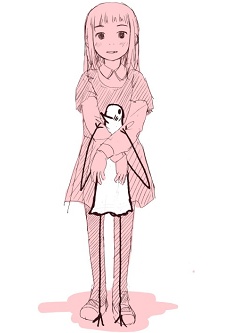
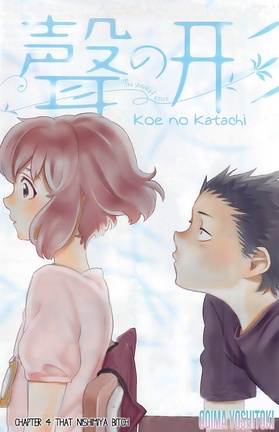

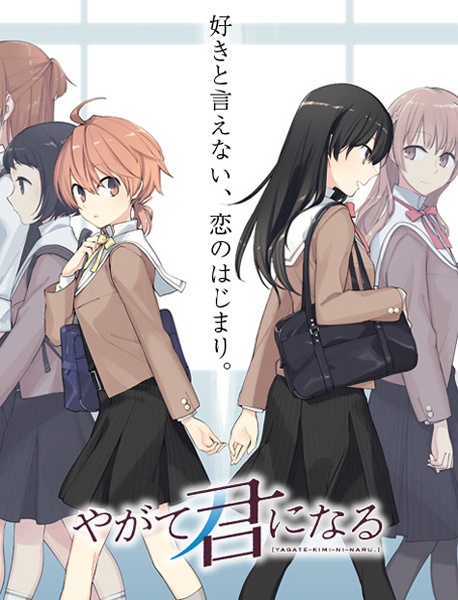

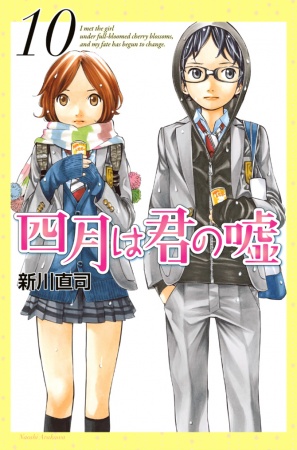
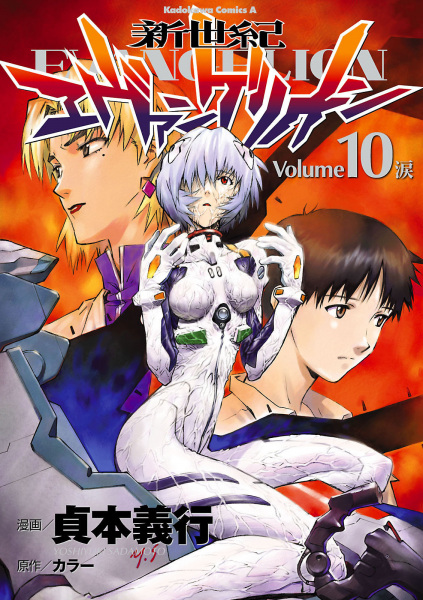
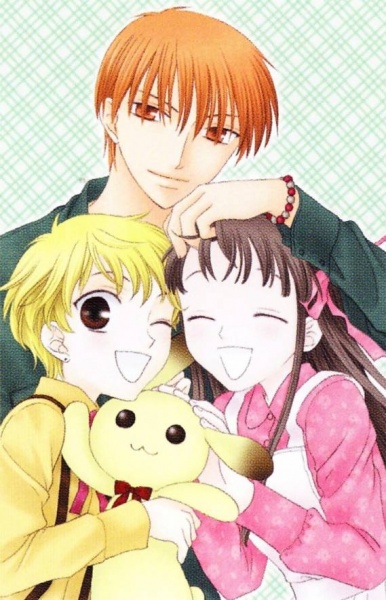


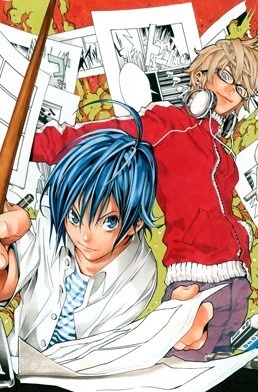
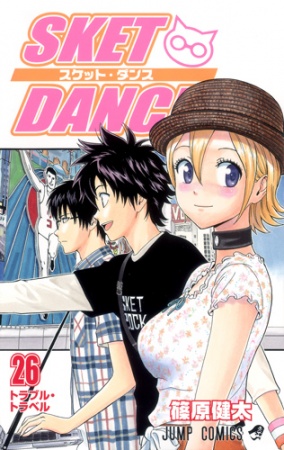
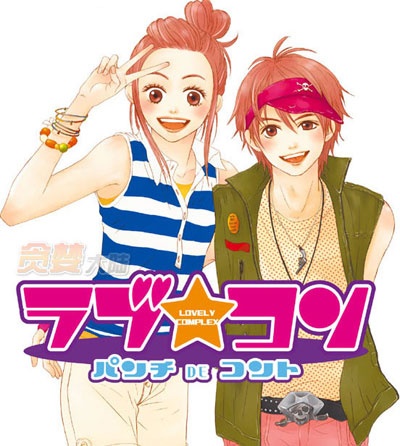
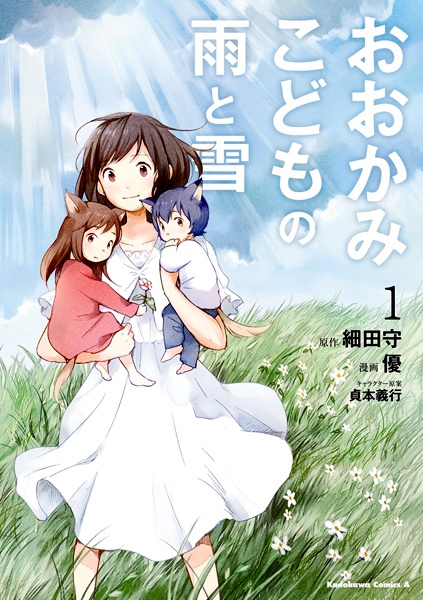
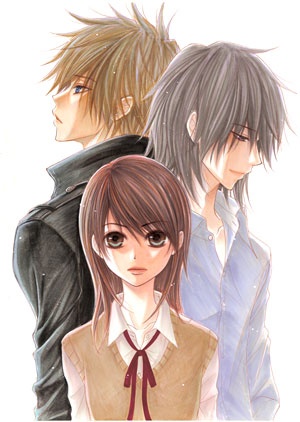

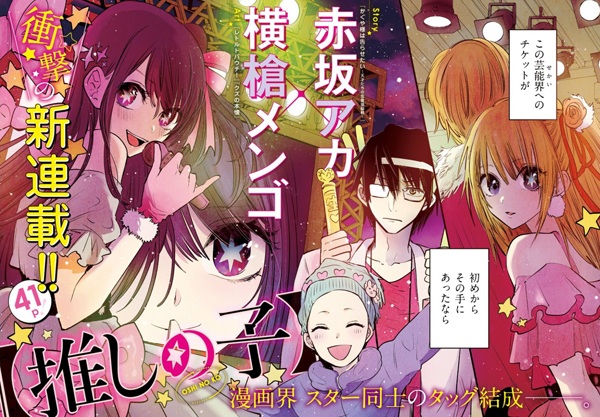
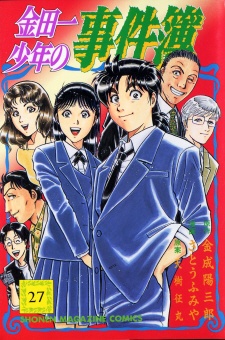
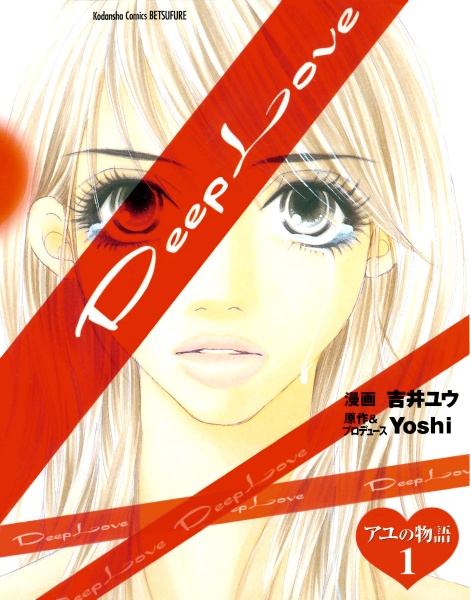

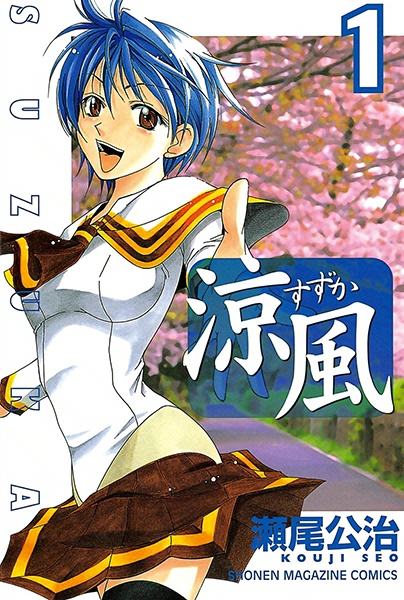
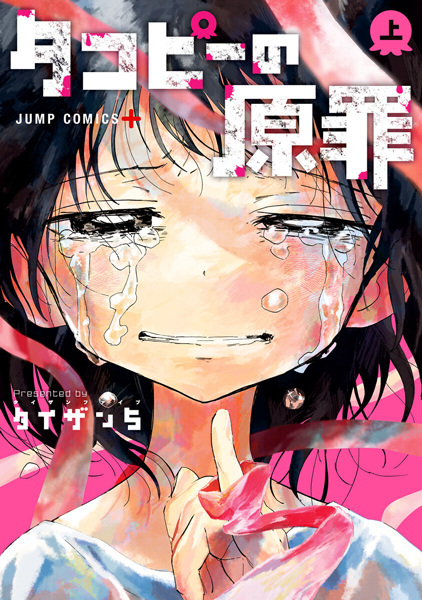
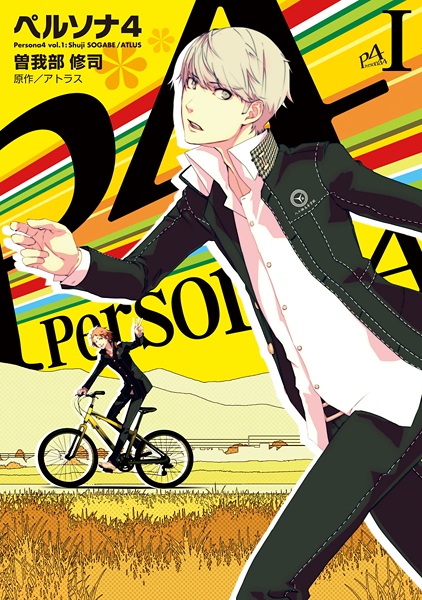
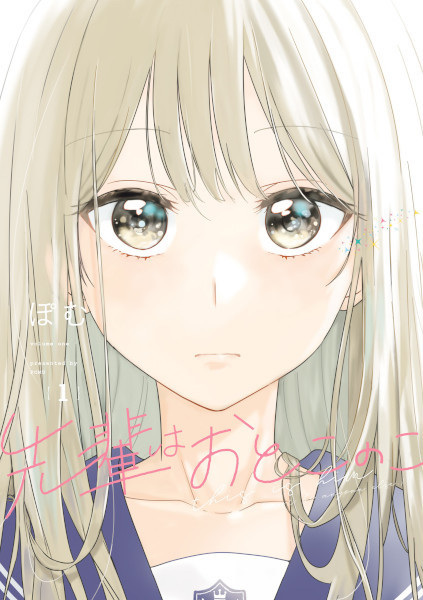
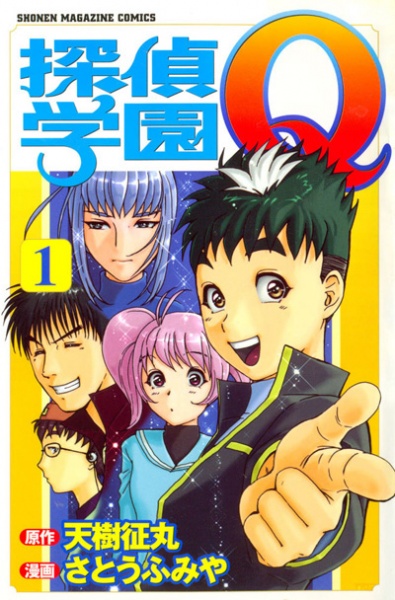
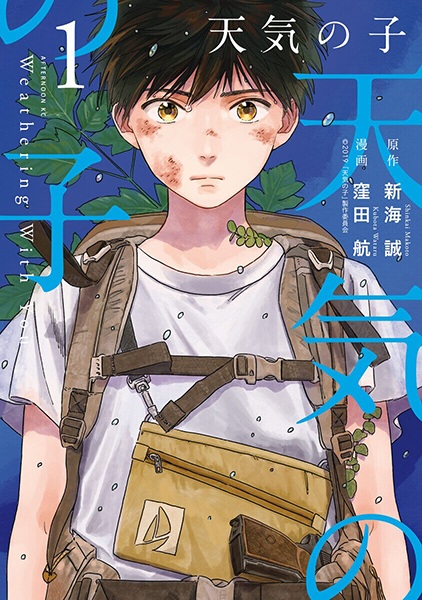




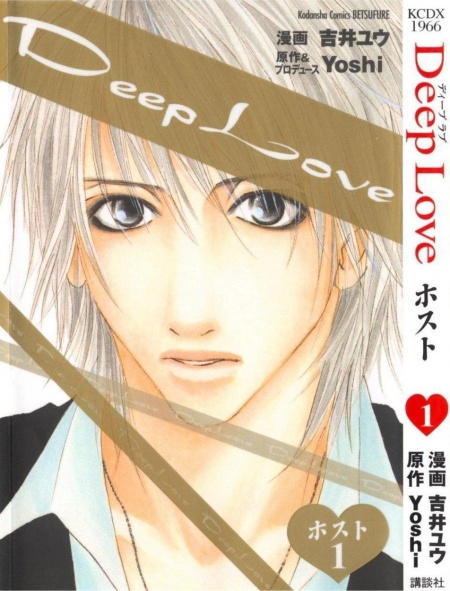
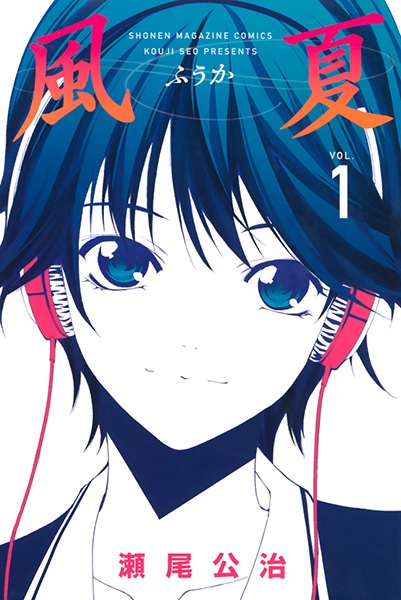
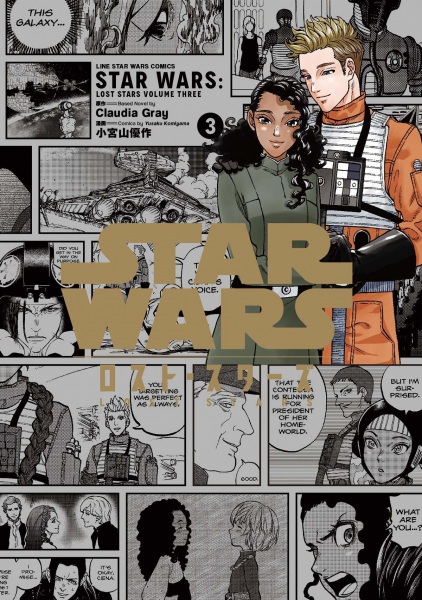

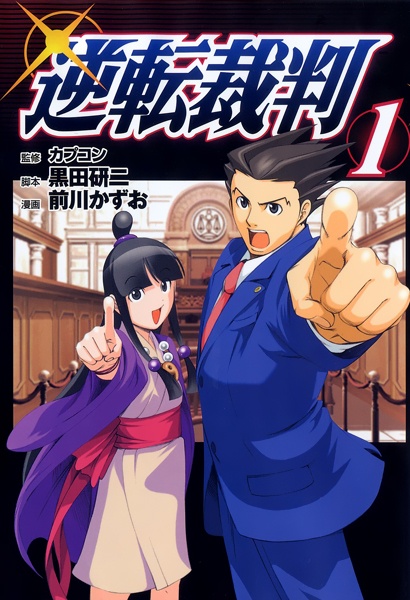
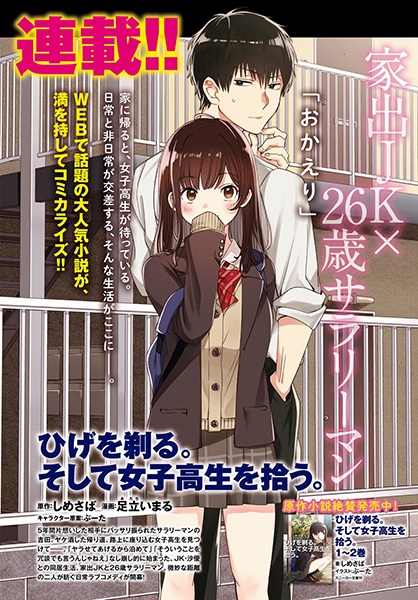

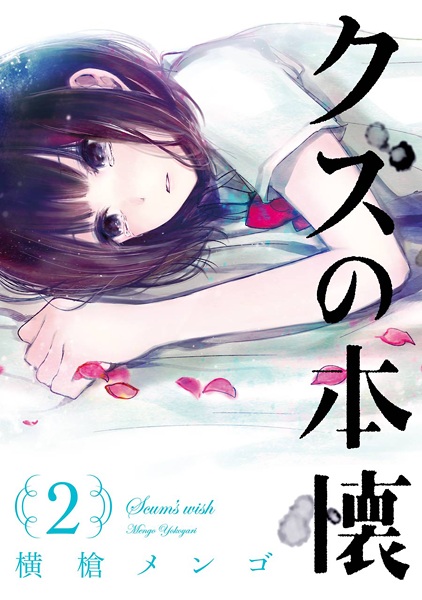



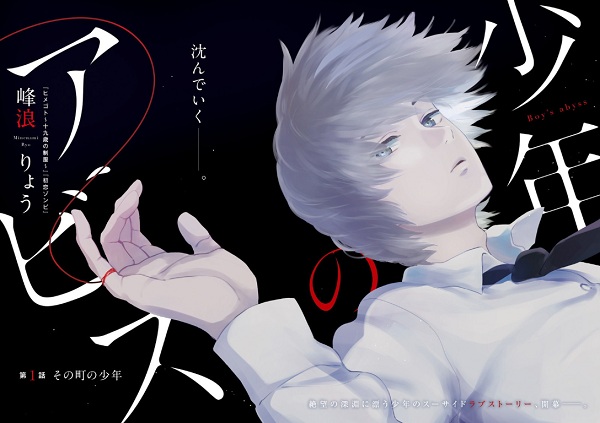

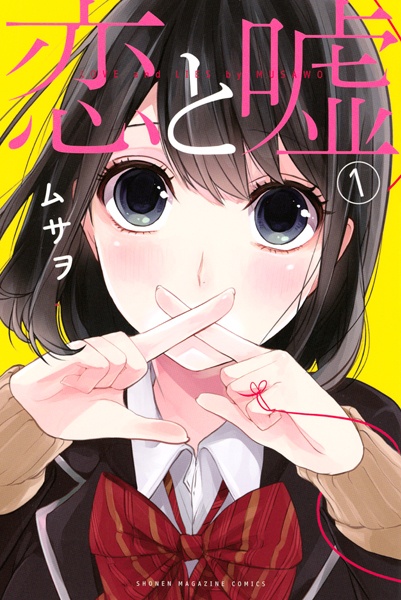

Comments
Post a Comment